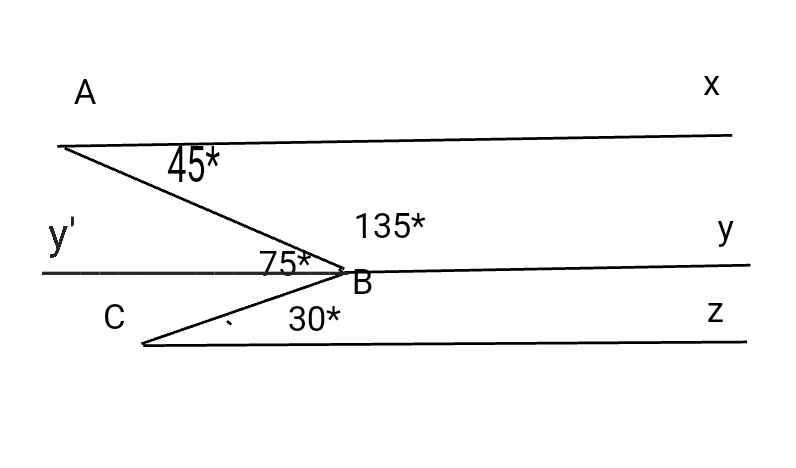Tìm x: \(\left(2x-1\right)^8=\left(2x-1\right)^{10}\)
Hãy nhập câu hỏi của bạn vào đây, nếu là tài khoản VIP, bạn sẽ được ưu tiên trả lời.


Lời giải:
Sử dụng bổ đề: Một số chính phương $x^2$ khi chia 3 dư 0 hoặc 1.
Chứng minh:
Nêú $x$ chia hết cho $3$ thì $x^2\vdots 3$ (dư $0$)
Nếu $x$ không chia hết cho $3$. Khi đó $x=3k\pm 1$
$\Rightarrow x^2=(3k\pm 1)^2=9k^2\pm 6k+1$ chia $3$ dư $1$
Vậy ta có đpcm
-----------------------------
Áp dụng vào bài:
TH1: Nếu $a,b$ chia hết cho $3$ thì hiển nhiên $ab(a^2+2)(b^2+2)\vdots 9$
TH1: Nếu $a\vdots 3, b\not\vdots 3$
$\Rightarrow b^2$ chia $3$ dư $1$
$\Rightarrow b^2+3\vdots 3$
$\Rightarrow a(b^2+3)\vdots 9$
$\Rightarrow ab(a^2+3)(b^2+3)\vdots 9$
TH3: Nếu $a\not\vdots 3; b\vdots 3$
$\Rightarrow a^2$ chia $3$ dư $1$
$\Rightarrow a^2+2\vdots 3$
$\Rightarrow b(a^2+2)\vdots 9$
$\Rightarrow ab(a^2+2)(b^2+2)\vdots 9$
TH4: Nếu $a\not\vdots 3; b\not\vdots 3$
$\Rightarrow a^2, b^2$ chia $3$ dư $1$
$\Rightarrow a^2+2\vdots 3; b^2+2\vdots 3$
$\Rightarrow ab(a^2+2)(b^2+2)\vdots 9$
Từ các TH trên ta có đpcm.

`#040911`
a,
\(\dfrac{1}{2}\cdot\left(x-4\right)-\dfrac{1}{4}\cdot\left(x-\dfrac{4}{3}\right)=2\cdot\left(x-\dfrac{1}{2}\right)\)
\(\Rightarrow\dfrac{1}{2}x-2-\dfrac{1}{4}x+\dfrac{1}{3}=2x-1\\\Rightarrow\left(\dfrac{1}{2}x-\dfrac{1}{4}x-2x\right)=2-\dfrac{1}{3}-1\\ \Rightarrow-\dfrac{7}{4}x=\dfrac{2}{3}\\ \Rightarrow x=\dfrac{2}{3}\div\left(-\dfrac{7}{4}\right)\\ \Rightarrow x=-\dfrac{8}{21}\)
Vậy, \(x=-\dfrac{8}{21}\)
b,
\(\dfrac{3}{4}-\left(x-\dfrac{1}{2}\right)^2=-\dfrac{11}{2}\)
\(\Rightarrow\left(x-\dfrac{1}{2}\right)^2=\dfrac{3}{4}-\left(-\dfrac{11}{2}\right)\\ \Rightarrow\left(x-\dfrac{1}{2}\right)^2=\dfrac{25}{4}\\ \Rightarrow\left(x-\dfrac{1}{2}\right)^2=\left(\pm\dfrac{5}{2}\right)^2\)
\(\Rightarrow\left[{}\begin{matrix}x-\dfrac{1}{2}=\dfrac{5}{2}\\x-\dfrac{1}{2}=-\dfrac{5}{2}\end{matrix}\right.\\ \Rightarrow\left[{}\begin{matrix}x=\dfrac{5}{2}+\dfrac{1}{2}\\x=-\dfrac{5}{2}+\dfrac{1}{2}\end{matrix}\right.\\ \Rightarrow\left[{}\begin{matrix}x=3\\x=-2\end{matrix}\right.\)
Vậy, \(x\in\left\{-2;3\right\}\)
c,
\(\dfrac{3}{16}+1\dfrac{1}{16}\cdot\left(x-\dfrac{2}{3}\right)^2=\dfrac{3}{4}\)
\(\Rightarrow\dfrac{17}{16}\cdot\left(x-\dfrac{2}{3}\right)^2=\dfrac{3}{4}-\dfrac{3}{16}\\ \Rightarrow\dfrac{17}{16}\cdot\left(x-\dfrac{2}{3}\right)^2=\dfrac{9}{16}\\ \Rightarrow\left(x-\dfrac{2}{3}\right)^2=\dfrac{9}{16}\div\dfrac{17}{16}\\ \Rightarrow\left(x-\dfrac{2}{3}\right)^2=\dfrac{9}{17}\)
Bạn xem lại đề có sai kh nhỉ?
c) \(\dfrac{3}{16}+\dfrac{1}{\dfrac{1}{16}}\left(x-\dfrac{2}{3}\right)^2=\dfrac{3}{4}\)
\(\Rightarrow16\left(x-\dfrac{2}{3}\right)^2=\dfrac{3}{4}-\dfrac{3}{16}\)
\(\Rightarrow16\left(x-\dfrac{2}{3}\right)^2=\dfrac{9}{16}\)
\(\Rightarrow\left(x-\dfrac{2}{3}\right)^2=\dfrac{9}{16}:16\)
\(\Rightarrow\left(x-\dfrac{2}{3}\right)^2=\dfrac{9}{256}=\left(\dfrac{3}{16}\right)^2\)
\(\Rightarrow\left[{}\begin{matrix}x-\dfrac{2}{3}=\dfrac{3}{16}\\x-\dfrac{2}{3}=-\dfrac{3}{16}\end{matrix}\right.\)
\(\Rightarrow\left[{}\begin{matrix}x=\dfrac{3}{16}+\dfrac{2}{3}\\x=-\dfrac{3}{16}+\dfrac{2}{3}\end{matrix}\right.\)
\(\Rightarrow\left[{}\begin{matrix}x=\dfrac{41}{48}\\x=\dfrac{23}{48}\end{matrix}\right.\)

Lời giải:
$\frac{2x-y}{x+y}=\frac{1}{3}$
$\Rightarrow 3(2x-y)=x+y$
$\Leftrightarrow 6x-3y=x+y$
$\Leftrightarrow 5x=4y$
$\Leftrightarrow x=\frac{4}{5}y$. Thay vào biểu thức A:
$A=\frac{\frac{4}{5}y+y}{2.\frac{4}{5}y+y}=\frac{\frac{9}{5}y}{\frac{13}{5}y}=\frac{9}{13}$

\(A=\dfrac{3x-1}{x+2}\inℕ\left(x\inℕ;x\ne-2\right)\)
\(\Rightarrow3x-1⋮x+2\)
\(\Rightarrow3x-1-3\left(x+2\right)⋮x+2\)
\(\Rightarrow3x-1-3x-6⋮x+2\)
\(\Rightarrow-7⋮x+2\)
\(\Rightarrow x+2\in U\left(7\right)=\left\{1;7\right\}\)
\(\Rightarrow x\in\left\{-1;5\right\}\)
\(\Rightarrow x\in\left\{5\right\}\left(x\inℕ\right)\)


a) Vẽ tia By' là tia đối của tia By
Ta có:
∠ABy' + ∠ABy = 180⁰ (kề bù)
⇒ ∠ABy' = 180⁰ - ∠ABy
= 180⁰ - 135⁰
= 45⁰
⇒ ∠ABy' = ∠BAx = 45⁰
Mà ∠ABy' và ∠BAx là hai góc so le trong
⇒ By // Ax
b) Ta có:
∠CBy' = ∠ABC - ∠ABy'
= 75⁰ - 45⁰
= 30⁰
⇒ ∠CBy' = ∠BCz = 30⁰
Mà ∠CBy' và ∠BCz là hai góc so le trong
⇒ By // Cz

\(a^m=a^n\)
\(\Rightarrow m=n\)
Với \(a^m=a^n\) mọi \(m=n\)
Vậy: \(m=n\in\left\{1;2;3;4;...\right\}\)

\(a=2^{100}=\left(2^4\right)^{25}=16^{25}\)
\(b=3^{75}=\left(3^3\right)^{25}=27^{25}\)
\(c=5^{50}=\left(5^2\right)^{25}=25^{25}\)
Vì \(16^{25}< 25^{25}< 27^{25}\)
\(\Rightarrow a< c< b\)
\(a=2^{100},b=3^{75},c=5^{50}\\ \Rightarrow a=30^{85},b=30^{65},c=30^{44}\\ \Rightarrow a>b>c\)

\(32^9=\left(2^5\right)^9=2^{45}=8^{13}.2^6\)
\(18^{13}=9^{13}.2^{13}\)
\(9^{13}>8^{13};2^6< 2^{13}\)
\(\Rightarrow32^9< 18^{13}\Rightarrow\left(-32\right)^9>\left(-18\right)^{13}\)

Mình cảm thấy đề bài hơi sai sai bạn có thể xem lại được không ạ

(2x - 1)⁸ = (2x - 1)¹⁰
(2x - 1)¹⁰ - (2x - 1)⁸ = 0
(2x - 1)⁸.[(2x - 1)² - 1] = 0
(2x - 1)⁸ = 0 hoặc (2x - 1)² - 1 = 0
*) (2x - 1)⁸ = 0
2x - 1 = 0
2x = 1
x = 1/2
*) (2x - 1)² - 1 = 0
(2x - 1)² = 1
2x - 1 = 1 hoặc 2x - 1 = -1
**) 2x - 1 = 1
2x = 2
x = 1
**) 2x - 1 = -1
2x = 0
x = 0
Vậy x = 0; x = 1/2; x = 1
(2x - 1)8 = (2x - 1)10
=) (2x - 1)10 : (2x - 1)8 = 1
(2x - 1)2 = 1 =) = 12
=) 2x - 1 = 1
2x = 2
x = 1.